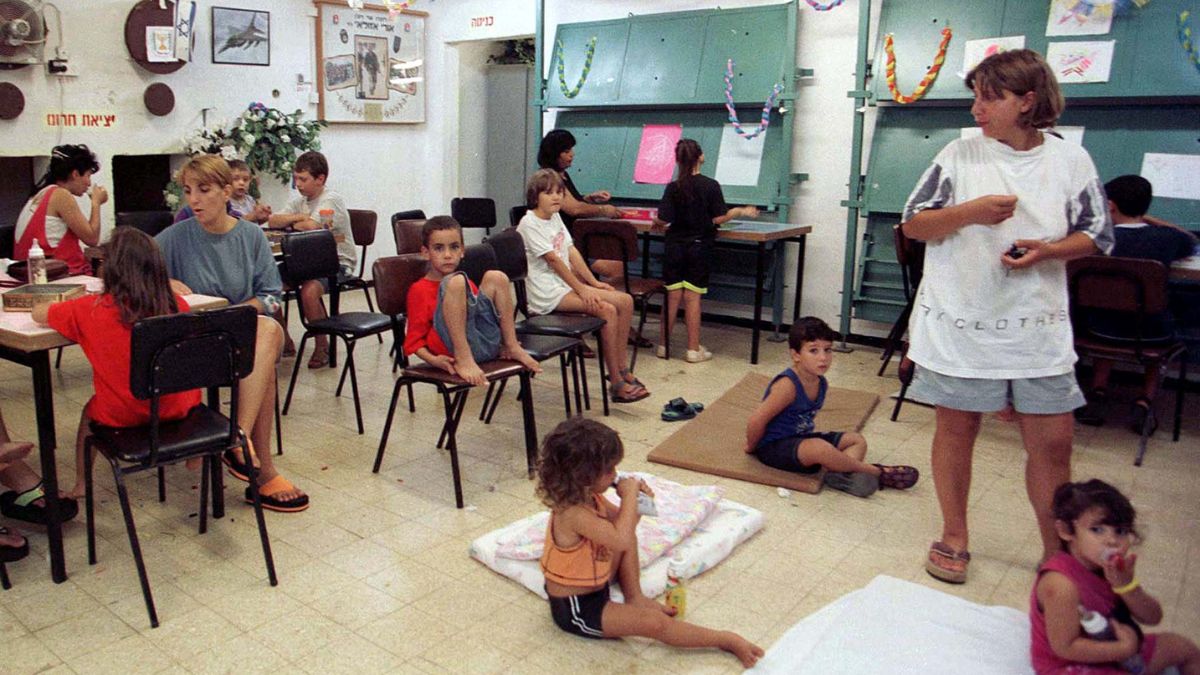Israel has been preparing for a potential attack from Iran and its proxies with a series of extensive measures aimed at fortifying the home front. This includes stocking blood supplies in fortified underground centres, relocating hazardous materials from factories, and conducting thorough checks of bomb shelters and water supplies.
These preparations, which intensified since the war in Gaza last October, have become more urgent with the recent escalation involving the Iranian-backed Hezbollah movement in southern Lebanon. The situation has the potential to spiral into a broader regional conflict.
“I know that the citizens of Israel are on alert, and I ask of you one thing - keep patient and cool,” Israeli Prime Minister Benjamin Netanyahu said on Wednesday while meeting new army recruits. “We are prepared for both defence and attack, we are striking our enemies and are also determined to defend ourselves.”
Watch:
What comprises Israel’s bomb shelter infrastructure?
Israel’s system of bomb shelters, dating back five decades, is a cornerstone of the country’s defence strategy. This network of shelters was developed to protect civilians from aerial bombings and has been continuously improved over the years.
The importance of these shelters was highlighted in 1991 when Iraq fired Scud missiles at Israel, prompting the country to pass a law requiring bomb shelters in every new building.
Today, about 65 per cent of Israelis have access to a bomb shelter in their homes or nearby. According to a report by the Wall Street Journal, these shelters are constructed from reinforced concrete with heavy metal doors and are designed to withstand blasts and shrapnel from missile attacks.
Impact Shorts
More ShortsThe shelters in apartment buildings are constructed to remain standing even if the rest of the building collapses.
In Tel Aviv, there are 168 underground public bomb shelters and a total of 356 shelters when including those in educational institutions and other municipal buildings. These shelters are equipped with basic amenities such as bathrooms, kitchens, showers, and air-filtration systems. Some even have Wi-Fi.
How does the current readiness of Israel look like?
Israel’s defence against potential missile attacks primarily relies on its advanced multitiered air-defence system, which has a stellar track record. During Iran’s direct attack in April, this system, with support from the US and other allies, intercepted 99 per cent of over 300 missiles and drones.
In Haifa, a city well within the range of Hezbollah’s rockets, public bomb shelters have been equipped with digital systems for remote unlocking during an attack and generators to ensure continued operation. The city’s Rambam Hospital has also readied its three-floor underground facility to treat patients in the event of an attack.
The military said the Home Front Command keeps in constant contact with factories and local authorities to maintain a “complete picture of the inventory levels of hazardous materials.”
In anticipation of potential chaos, Israel’s national ambulance service, Magen David Adom (MDA), has fortified its blood donation centre with extra-thick concrete walls, blast doors, and airlocks, reported Reuters.
Aryeh Myers of MDA stated the importance of readiness, saying, “We’ve got the threats from Iran, we’ve got threats from Hezbollah. Massive rocket attacks, massive threats to the state of Israel and we want to make sure that we are ready for anything.”
Will the bomb shelters be affective?
Despite the looming threat, daily life in many Israeli cities continues with a semblance of normalcy. Summer activities for children are ongoing, and grocery stores remain fully stocked, reported the Wall Street Journal.
The military has not imposed limits on public gatherings, and many bomb shelters are not yet open, reflecting a general atmosphere of cautious vigilance rather than panic.
According to an Israeli security official, the current infrastructure should protect Israelis from long-range missile attacks, as they were designed to withstand the effects of Scud missiles. However, around a third of Israelis, particularly those in poorer areas or older buildings, do not have immediate access to shelters.
How is are Israelis preparing?
The public is advised to have a few days’ worth of food, water, and medical supplies in their private or shared shelters. The public shelters are equipped with emergency water sources but no food. In light of the imminent threat, many Israelis have been stocking up on essentials.
“The stock of banknotes and coins in the Bank of Israel and the banking system will, according to every visible forecast, be sufficient,” assured the Bank of Israel in preparation for potential mass cash withdrawals.
As the situation continues to evolve, Israel’s multifaceted approach to civil defence, encompassing both advanced technology and a robust network of bomb shelters, remains a critical component of its strategy to protect its citizens from the threat of missile attacks.
Also Watch:
With inputs from agencies
)